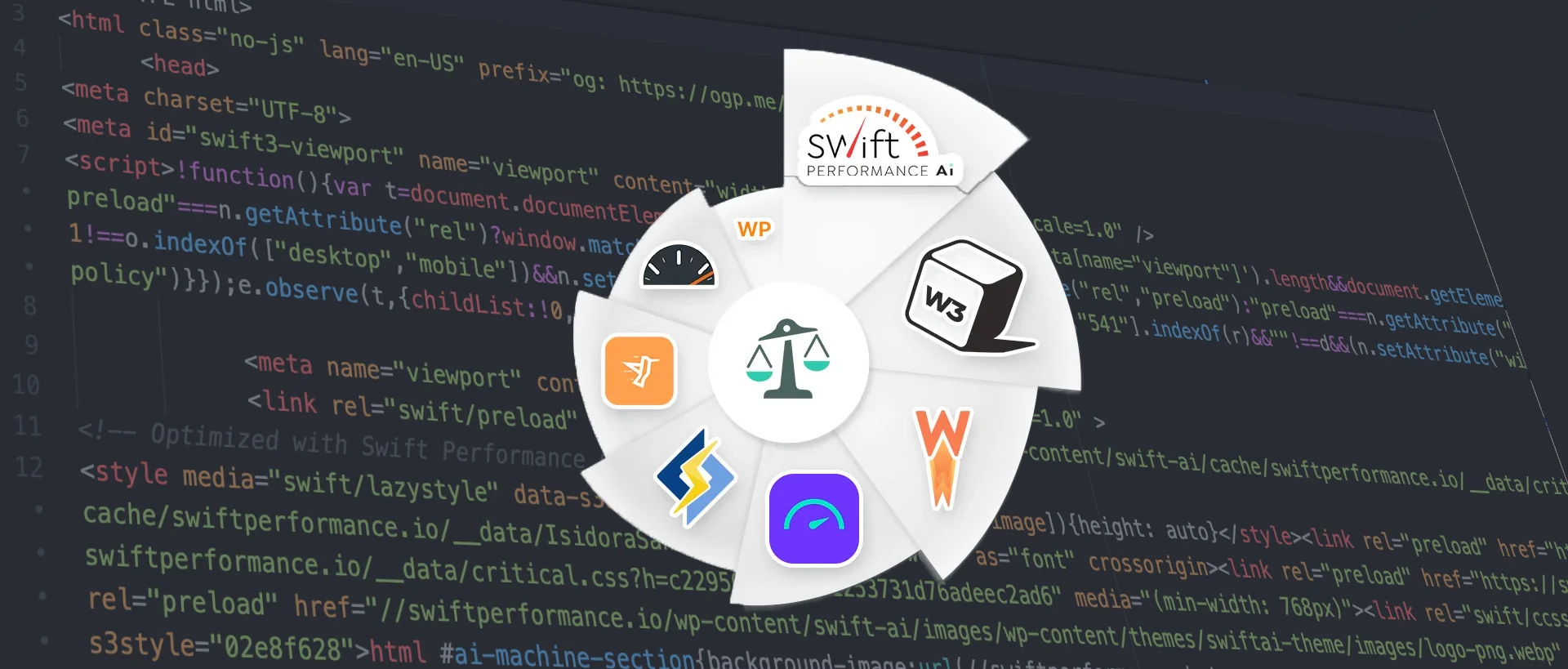Why is WordPress running so slow? If you have a WordPress website, believe us, you are not the first to ask this question. This doesn’t mean that you should be worried about WordPress being slow in general. However, certain factors can slow down the loading time. Luckily, once you understand the reason behind the issue, you can easily fix it and boost the performance of your pages.
Today, we are going to dig deep and learn about the factors that can slow down WordPress. We will also look into solutions you can opt for to test your website to find the issues that cause the problem. If you’re ready, without further ado, let’s get it started!
What exactly can be slow?
Before taking a close look at the 5 most common factors that make WordPress run slow, first, we need to understand what it means that WordPress is slow. What exactly can be slow in WordPress? Here are 2 crucial things you need to take into consideration:
- TTFB
TTFB or Time to First Byte is a metric that determines the responsiveness of a web server. To put it simply, TTFB measures the amount of time the browser has to wait until it receives the first byte of data from the server. The lower the TTFB value, the faster the loading time of your website, and needless to say, the better the user experience. However, when this value is high, it means that you need to look behind the issue and find out what causes the trouble.
- Other Web Vitals
When it comes to WordPress websites, there are other Web Vitals that can be slow, too. Generally, these are metrics that deal with a broad range of aspects of page speed. When your WordPress page is slow, one of the first things to do is to check these. The good news is that these are easy to fix. But let’s see exactly which web vitals should you put under your radar:
- LCP or Largest Contentful Paint: This value refers to the time it takes for the largest element on your website to load. This element can be anything, for instance, a larger image, a video, or a text. Why is this important? Well, it’s quite simple. The general idea is that the largest element makes the biggest impression on the visitor, so once it is loaded, the page can be considered fully loaded. The Good score for LCP is under 2.5 seconds. Between 2.5 and 4 seconds, the LCP of your page should be improved. In case it takes more than 4 seconds to lead, the LCP is considered poor.
- FCP or First Contentful Paint: FCP measures the amount of time from when a page starts loading to when all parts and elements of the page are fully rendered on the screen. This includes images, texts, videos, and all elements that need to load. The lower the FCP value, the better. To put it in perspective, a value under 1.8 seconds is Good, a value under 3 seconds Needs Improvement. and anything above means the FCP of your page is Poor.
- TTI or Time to Interactive: This one measures the time from when your page starts to load to when it is fully interactive. To consider a page fully interactive, 3 things need to happen. First, all useful content should be displayed. This is measured by the previously discussed FCP. Second, the most visible elements should be rendered. Last, but not least, your page must be able to respond to user interaction within 50 ms.
- TBT or Total Blocking Time: TBT shows the amount of time in milliseconds between the previously mentioned FCP (First Contentful Paint) and TTI (Time To Interactive). Scores under or equal to 200 ms are good, while a score between 200 and 600 falls into the “Needs Improvement” category.
- FID or First Input Delay: Last, but not least, FID measures the time it takes for a page to respond to the visitor’s first input. For instance, this is relevant when a user wants to click on a button, but nothing happens, as they are not yet functional, only showing. An FID value under 100 ms is considered a good score, under 300 is considered ok, but not ideal.
What can slow down WordPress?
Now that we understand what it really means to have a slow WordPress, let’s see what are the most common factors that can slow down WordPress. In the next section, we are going to discuss 5 of them and share some useful hacks with you that can help solve the issue.
- Hosting
If you’re wondering why WordPress is running so slow, the very first thing you should check out is your hosting provider. When you create a website, one of the first steps is to choose a hosting server. One of the most common reasons why WordPress loads slow is that the hosting server is slow or offers poor-quality hosting. Each website is different, with different needs, requirements, and traffic. In case the hosting you chose at the beginning no longer matches your website’s traffic or space needs, chances are that hosting might be the reason behind your slow WordPress website. Also, there are many cheap shared hosting servers, but there’s an issue you must be aware of. The problem with these cheap shared hosting providers is that there can be hundreds of websites running on a single server. Needless to say, this won’t allow your pages to load as quickly and offer such a great user experience for your visitors.
- Database
The database collects and stores all your website’s information. Think of it like a storage center with loads of data. It goes without saying that without maintenance, things can go terribly wrong. Once your database becomes bloated with unused data that is no longer needed, your WordPress website will run slower than before. And believe us, it doesn’t take much time for things to get out of control, especially in the case of autoloaded data. Just like its name suggests, autoloaded data is loaded on every page load automatically and it is not unusual to contain data that is no longer used. These can be data left behind deleted plugins or themes, and many more. Once you clear your database from autoloaded data, your website will feel lighter and it will load faster.
- Poorly coded plugins
Continuing our list of the factors that make WordPress run slow, we must take a closer look at plugins. Plugins are great, they have useful features and offer quick solutions to WordPress developers or website owners. However, you might find yourself having unexpected troubles due to using poorly coded plugins. Unfortunately, many plugins increase page speed scores, and CPU or memory usage, which means that your website will load slower. For instance, looking at analytics plugins Analytify, Slimstat Analytics, or Site Kit by Google are considered slow plugins that have a negative impact on page speed. In the contact form category, Caldera Forms, Everest Forms, Forminator, and Happyforms can also slow down your WordPress sites. The best you can do is to choose plugins that are high quality and have good feedback from customers. What you can also do to avoid plugins slowing down your WordPress site is to disable all unnecessary add-ons, modules, settings, and usage tracking. This can make a huge difference in how your website reacts to a certain plugin.
- Poorly coded themes
The same is true for WordPress themes. Similarly to plugins, when creating your website, you can easily come across poorly coded themes that will have a bad impact on your website’s loading speed. The problem with themes, especially if they have poor code, is that they contain lots of unnecessary features and elements. These themes might be more visually appealing and exciting than others, but they can seriously slow down your pages. What you can do is choose a WordPress theme that is either simple, unique, or customizable. It goes without saying that a simple theme will only have the basic design elements and features a website needs. On the other hand, if you opt for a unique theme, this will be developed exactly for your website. This means that it will contain only those elements and features that are needed for your website, so you can avoid bloating the theme with unnecessary things. Also, there are customizable themes that allow you to switch off all features and remove all elements that your website doesn’t need. Just to mention some, Astra, Generatepress, Hello Theme, or Neve are fast-loading, flexible themes that can give you freedom when creating your WordPress website design.
- Page builders
If you’re into attention-grabbing, tailored website designs, page builders are a go-to solution. These allow you to create beautiful, unique pages, and innovative content and take full control of your website design. However, what you should also take into consideration is that the use of page builders is not ideal when it comes to page speed. The problem with page builders is that most of them contain extra code embedded in your website that has a negative impact on the loading speed of your pages. A good alternative can be Gutenberg, which is the built-in editor for WordPress. This offers an innovative and flexible customization and publishing experience without slowing down your website.
How can you test your WordPress site to detect what makes it run slow?
Now that you are familiar with the most common reasons behind a slow WordPress website, there is nothing left but to learn how to detect them. The good news is that there are some simple solutions you can rely on to find out what exactly makes your WordPress page speed slow. Here are some recommendations that are proven to work:
- PageSpeed Insights: This tool allows you to analyze your website and helps you improve your page speed score on all devices. To check your website’s performance you only need to insert the link to your website and click Analyze. PageSpeed Insights will not only show your page speed score, but it will also give you suggestions on what to modify to make your website faster.
- Query Monitor: Similarly to the one mentioned above, Query Monitor is a 100% free plugin that you can rely on to test your website’s performance and page speed. You can dig deep into the database, scripts, queries, timing, features, plugins, etc. Once you run the test, you will get a collection of useful information that will allow you to debug your website and boost its performance.
- Clean autoloaded data: To free up your website from unnecessary information that only bloats the database, you will need to clean autoloaded data. As a first step, you should check the autoloaded data size. This will show you how big the autoloaded table is. Anything over 1 MB needs to be cleaned up. Always try to stay below 500 kb or less. Another smart thing you can do is list the top autoloaded data entries. This will allow you to see the top 30 autoloaded entries that create the bloat. Delete the ones that you no longer need.
Wrapping Up
We hope our article could offer you some insight into the world of slow running WordPress websites and the reasons behind it. As you can see, there are many factors that can cause trouble and make your website bloated with unnecessary information, features, and elements. However, there’s no reason to panic. The good news is that once you look into the issues and find what makes your WordPress running so slow, the solution is only a few clicks away.








